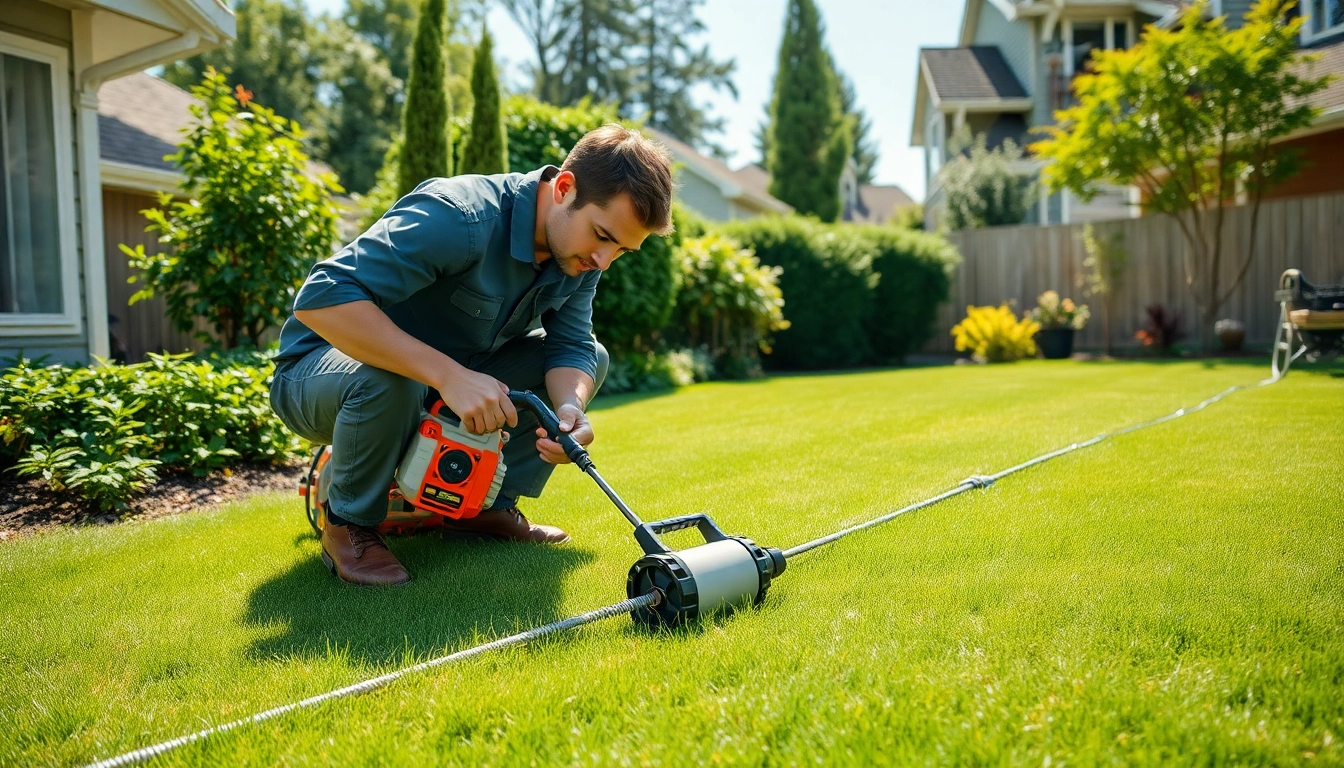Understanding Termite Reticulation Systems
What is a Termite Reticulation System?
A termite reticulation system is a sophisticated pest management solution designed to protect buildings from termite infestations. It consists of a network of pipes and access points installed around the perimeter of a property. These systems deliver liquid chemical treatments directly into the ground, creating a barrier that deters termites from approaching the structure. Termite reticulation systems are particularly favored for their efficiency and the ability to provide continuous protection with minimal disruption to the property.
Components of a Reticulation System
The main components of a termite reticulation system include:
- Pipes: Typically made from durable plastic, these pipes are laid underground around the perimeter of the home, allowing for the even distribution of termite treatments.
- Access Points: These are specific entry points that allow pest control professionals to easily refill the system with termite deterrent chemicals.
- Control Units: These units help monitor the distribution of chemicals and ensure that the system is functioning efficiently. They may also include gauges to detect pressure changes that indicate leaks or blockages.
- Barrier Chemicals: Various termiticides are used within the system to create a chemical barrier that termites cannot cross, thus protecting the property.
Why Use a Reticulation System for Termite Prevention?
Employing a termite reticulation system offers numerous advantages. Unlike traditional methods that involve occasional treatments, a reticulation system provides continuous, proactive protection. With the ability to refill chemicals directly into the ground at scheduled intervals, property owners can maintain an effective barrier against termites over the long term. This not only enhances peace of mind but can also preserve property value by preventing costly structural damage.
When to Refill Your Termite Reticulation System
Signs Your System Needs Refilling
Understanding when to refill your termite reticulation system is crucial for maintaining its effectiveness. Key signs that indicate a refill is necessary include:
- Decreased alerts or signs of chemical effectiveness, such as termites found in the vicinity.
- Records of past refills exceeding the recommended timeline (typically 3 to 8 years based on chemical type).
- Observations of leaks or broken lines, which can diminish the barrier’s effectiveness.
Average Lifespan of Chemical Treatments
The longevity of the chemical treatments in termite reticulation systems varies depending on the active ingredient used. Generally, chemicals can last between 3 to 8 years. However, environmental factors, such as soil composition and moisture levels, can significantly influence the effectiveness of these treatments. Regular inspections are recommended to ensure the integrity of the chemical barrier.
Best Practices for Scheduling Refills
To ensure optimal pest protection, consider the following best practices for scheduling refills:
- Follow the manufacturer’s recommendations regarding the longevity of the chemicals used.
- Schedule regular inspections, ideally every 12 months, to assess the condition of the system and monitor for any signs of termite activity.
- Document all refill dates and observations meticulously, as this data can be useful for planning future maintenance and assessing the system’s performance.
Cost Factors for Termite Reticulation System Refills
Comparing Pricing Across Services
The cost of refilling a termite reticulation system can vary significantly based on several factors, including geographical location, the service provider’s reputation, and the specific chemicals used. On average, homeowners can expect to pay between AUD 200 to AUD 800 for a professional refill service. It’s advisable to obtain multiple quotes from reputable pest control companies to ensure fair pricing and comprehensive service.
Hidden Costs in Maintenance
In addition to the direct costs of refills, homeowners should be aware of potential hidden costs associated with maintaining a termite reticulation system. These can include:
- Inspection fees, which may not always be included in refill service costs.
- Expenses related to repairing any damage to the system caused by landscaping or construction activities.
- Costs incurred from emergency termite treatments if the system fails before the next scheduled refill.
Cost-Effective Maintenance Tips
To manage and minimize expenses related to termite prevention, homeowners can follow these cost-effective maintenance tips:
- Establish a routine of annual inspections to catch issues early.
- Opt for a pest control service that offers maintenance plans covering regular refills and inspections.
- Engage in preventative landscaping practices by clearing away wood debris and ensuring proper drainage around the home.
DIY vs. Professional Refills: Which is Best?
Benefits of Professional Termite Reticulation Refills
While DIY refills may seem appealing for their cost-saving potential, professional termite reticulation refills provide several benefits:
- Expertise: Trained pest control technicians understand the complexities of the systems and can identify issues that the average homeowner may overlook.
- Safety: Professionals have the necessary equipment and knowledge to handle pesticides safely, minimizing risks to both occupants and the environment.
- Guaranteed Work: Many pest control services offer warranties or guarantees on their work, providing additional peace of mind.
Steps for DIY Refilling
For those who possess the knowledge and confidence to attempt a DIY refill, here are the basic steps to follow:
- Prepare the area by clearing away any debris and granting easy access to the system’s access points.
- Obtain the appropriate termiticide that matches the previous chemical used in the system.
- Carefully follow the manufacturer’s instructions for the refill process, ensuring that no chemicals splash onto skin or surrounding areas.
- Monitor the system for leaks or issues post-refill and document the refill date for future reference.
Common Mistakes to Avoid
When engaging in DIY refills, avoid the following common mistakes:
- Using different types of chemicals without verifying compatibility with the existing termiticide.
- Neglecting safety gear, which can lead to accidental exposure to harmful chemicals.
- Failing to document actions taken, which can complicate future maintenance if problems arise.
Long-Term Maintenance for Termite Protection
Regular Inspection Checklist
To ensure the ongoing effectiveness of your termite reticulation system, implement a regular inspection checklist that includes:
- Checking the system for any visible signs of tampering or damage.
- Inspecting access points for obstructions or leaks.
- Recording any termite activity near the property.
- Verifying that all scheduled inspections and refills have been completed on time.
Integrating Other Pest Control Methods
For a holistic approach to pest management, it is beneficial to integrate other pest control methods alongside the reticulation system. This could include:
- Using bait stations strategically placed around the property.
- Implementing mechanical barriers, such as steel mesh or concrete, to prevent termite access.
- Maintaining proper ventilation and reducing moisture in the home to deter termites.
Maintaining Your Home’s Safety Year-Round
Finally, maintaining a consistently termite-free environment requires vigilance year-round. Homeowners can contribute to safety by:
- Regularly assessing and managing landscaping needs to avoid creating termite habitats.
- Staying informed about the latest pest control technologies and treatment options.
- Communicating with neighbors about pest activities and ensuring community awareness.
In conclusion, understanding the importance of timely termite reticulation system refills and effective management strategies can help homeowners protect their properties while saving on future costs related to termite damage. By choosing the right practices and maintaining regular professional input, you ensure a safe and sound living environment.



